In the realm of strategic business tools, the customer journey map stands tall as a guiding light for understanding user interactions. Businesses may efficiently visualize and improve user interactions from first awareness to post-purchase assessment by employing a customer journey map. This post explores a sample customer journey map, explaining important phases and interactions that are essential to creating a smooth and engaging user experience.
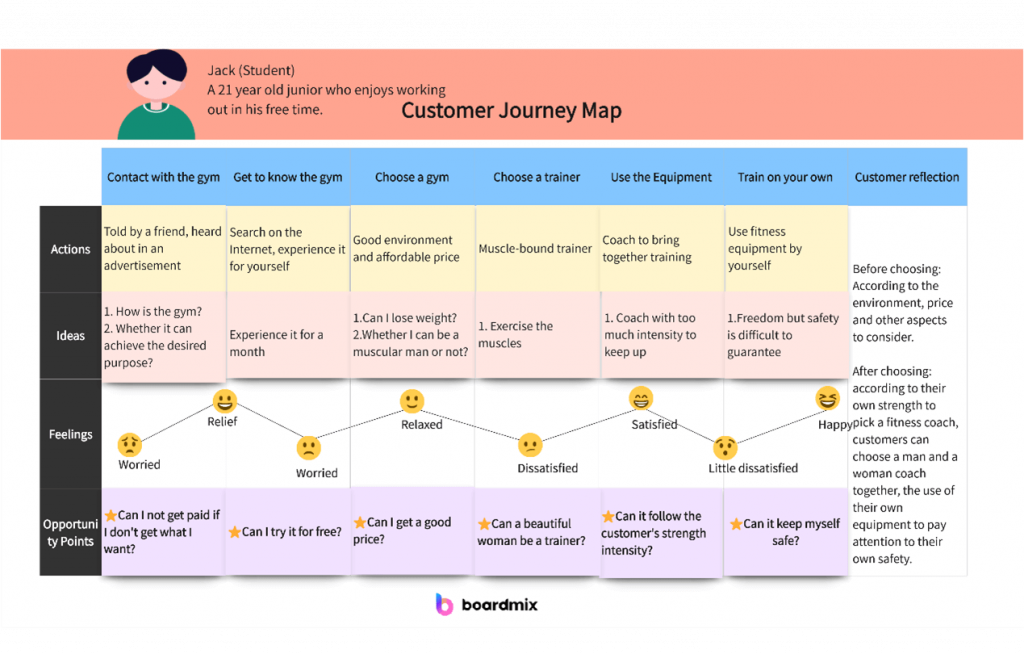
In this article:
Comprehending the Customer Journey Map
A customer journey map visually delineates the steps from awareness to advocacy, encompassing both online and offline interactions. It’s a compass that steers businesses towards empathy, illuminating pain points and optimization opportunities.
Critical Phases of a Customer Journey Map
- Awareness: The customer recognizes a need or problem they seek to address.
- Research: The customer explores information about potential solutions.
- Consideration: The customer evaluates different options to fulfill their need.
- Purchase: The customer makes a decision to purchase.
- Post-Purchase: The customer utilizes the product or service and may offer feedback.
- Loyalty: The customer becomes a repeat purchaser or advocate for the brand.

Customer Journey Map Example: Online Fashion Retailer
Let’s consider an example of an online fashion retailer to illustrate the application of a customer journey map example.
Awareness Stage
- Touchpoint: Social media ads, fashion blogs, influencer recommendations.
- Actions: Customer notices an advertisement for trendy clothing.
- Feelings: Intrigue, style-consciousness.
Research Stage
- Touchpoint: Search engines, fashion forums, brand websites.
- Actions: Customer searches for “latest fashion trends” and explores various brands’ websites.
- Feelings: Seeking inspiration, comparing styles.
Consideration Stage
- Touchpoint: E-commerce platform, customer reviews, style guides.
- Actions: Customer visits the fashion retailer’s website, browses collections, reads reviews, and consults style guides.
- Feelings: Weighing options, seeking validation.
Purchase Stage
- Touchpoint: Online shopping cart, secure checkout, order confirmation.
- Actions: Customer selects desired items, proceeds to checkout, and receives an order confirmation.
- Feelings: Excitement, anticipation.
Post-Purchase Stage
- Touchpoint: Delivery, product usage , customer feedback request.
- Actions: Customer receives the clothing, tries them on, shares feedback on social media or review platforms.
- Feelings: Satisfaction, validation.
Loyalty Stage
- Touchpoint: Email newsletters, loyalty rewards, exclusive offers.
- Actions: Customer subscribes to the retailer’s newsletter, earns loyalty points, makes repeat purchases.
- Feelings: Brand affinity, trust.
By analyzing the customer journey map example, the online fashion retailer can identify pain points such as slow delivery or sizing issues. Better customer experiences, greater satisfaction and higher retention rates can be achieved if these issues are addressed.
Boardmix Whiteboard: Crafting Your Example Customer Journey Map
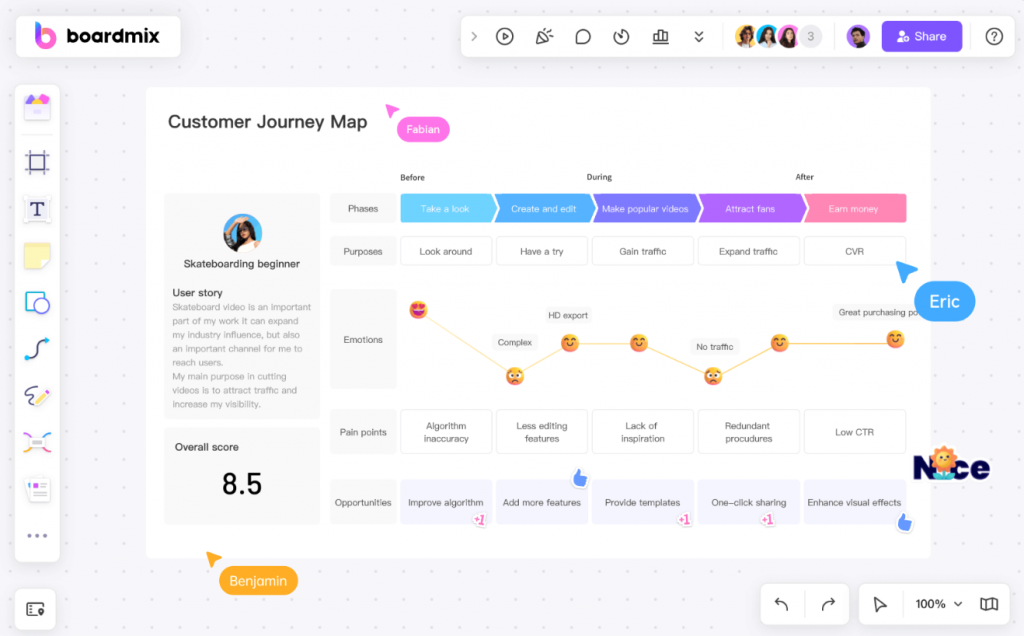
🚀 Limited time offer. Get 30% off on BoardMix right now! Simplify your charting of the customer journey now.
Boardmix offers several features to help create a customer journey map.
Here are some key features.
- Pre-designed templates: Boardmix provides a range of pre-designed templates tailored for crafting customer journey maps, offering a starting point that can be customized to fit specific requirements.
- Customization options: Once a template is selected, Boardmix allows for extensive customization, including color adjustments, section additions or removals, and resizing options, ensuring the map accurately reflects the unique customer experience.
- Collaboration tools: Boardmix enables real-time collaboration, allowing team members and stakeholders to contribute insights and feedback, fostering a collaborative approach to map creation.
- Real-time updates: Customer journeys evolve over time, and Boardmix facilitates easy updates to reflect new data and insights, ensuring the map remains accurate and relevant.
- Sharing options: Boardmix offers various sharing options, including link sharing and image or PDF export, simplifying distribution and presentation to relevant stakeholders.
With the capabilities offered by Boardmix, you can harness its potential to craft a thorough and visually captivating customer journey map. This tool aids in gaining deeper insights into your customers’ needs and preferences, enabling you to serve them more effectively.
How to Use Boardmix Template for Customer Journey Mapping
Leveraging templates in Boardmix streamlines the creation process, ensuring efficiency and consistency.
A step-by-step guide simplifies the process:
Step 1: Access Your Boardmix Account
Ensure seamless access to Boardmix by logging into your account. If you’re new, sign up for Boardmix Whiteboard at no cost to kickstart your journey instantly.
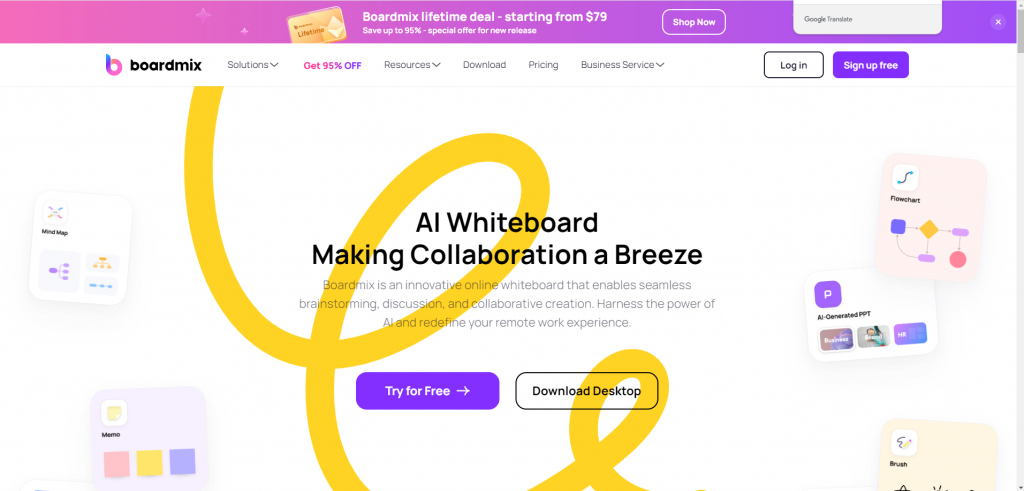
Step 2: Select Your Template
Once logged in, head over to the templates section within Boardmix. Here, you’ll discover a diverse array of pre-designed templates tailored for various purposes. Locate the customer journey map template and initiate your selection.
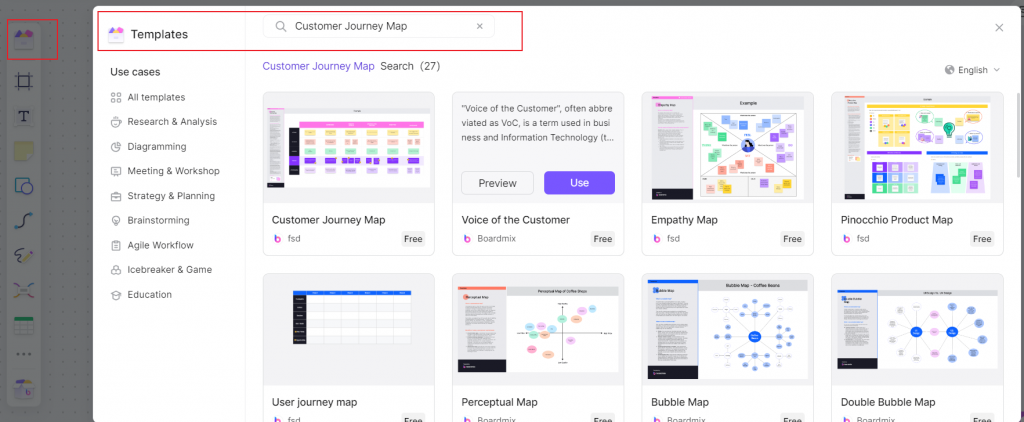
Step 3: Customize Your Template
Upon selecting the customer journey map template, commence customization to suit your specific requirements. Boardmix offers an assortment of tools and options enabling you to modify the template extensively. Adjust colors, include or exclude sections, resize elements, and more. Ensure to input your unique customer personas, touchpoints, stages, actions, and emotions into the template.
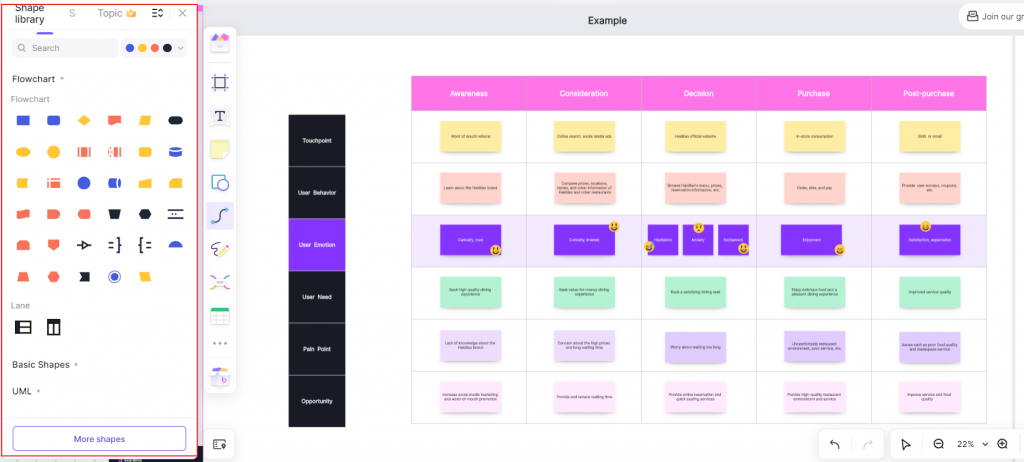
Step 4: Foster Collaboration and Sharing
Leverage Boardmix’s real-time collaboration capabilities to engage with your team members effectively. Invite pertinent stakeholders and team members to contribute their insights and feedback on the customer journey map. Utilize the collaboration features to collectively discuss and refine the map. Once satisfied with the final version, effortlessly share the map with others via a link or by exporting it as an image or PDF.
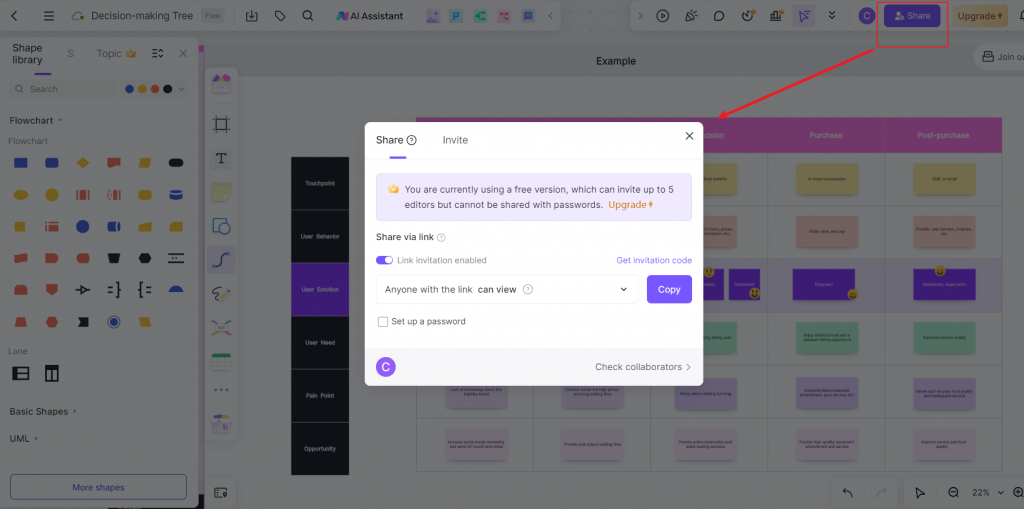
Step 5: Update and Enhance
Recognize that customer journeys evolve over time and aren’t static. Regularly update and refine your customer journey map as fresh data and insights emerge. Boardmix facilitates seamless updates to existing maps or the creation of new versions based on the latest information. This ensures your map remains precise and relevant.
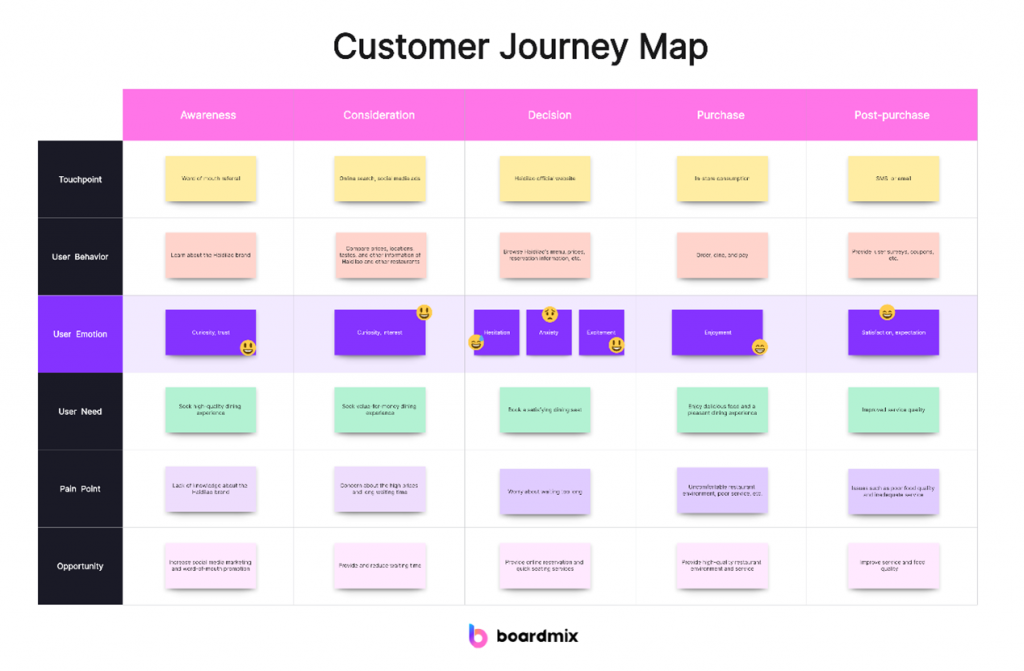
🔥 Unlock seamless customer journey mapping with BoardMix! Get 30% off now and revolutionize your user experience strategy.
Don’t miss out on optimizing your brand’s interactions.
Conclusion
A meticulously crafted customer journey map is pivotal in comprehending user interactions and optimizing the customer experience. By empathizing with customers at each journey stage, businesses cultivate engaging and satisfying experiences, fostering long-term loyalty and advocacy. Harness the power of customer journey map templates in Boardmix Whiteboard to save time and commence collaboration anytime, anywhere. Start your journey today and revolutionize your team’s approach to online collaboration!
FAQs
❓ What is the difference between journey map and task analysis?
The disparity between a journey map and task analysis lies in their scope: while a journey map encompasses not only the tasks involved but also the emotional and cognitive aspects of a user’s experience throughout the lifecycle, task analysis typically focuses solely on the sequence of tasks without considering emotions or feelings.
❓ Is customer journey the same as funnel?
A marketing funnel predominantly addresses the progression a potential customer makes towards completing a purchase. In contrast, a customer journey encompasses the entirety of a customer’s interactions with a brand, spanning from initial awareness to post-purchase engagement.
❓ Who should create a customer journey map?
The responsibility of creating a customer journey map typically falls on key stakeholders, including members of the marketing team such as marketing managers. They contribute insights regarding customer acquisition phases, marketing touchpoints, and strategic approaches.
 iVoicesoft.com Software Review, Software Giveaway & Deals
iVoicesoft.com Software Review, Software Giveaway & Deals


